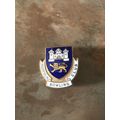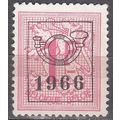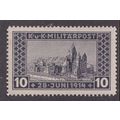Aden, Yemen - view from sea - Bondflix postcard c.1940s
- Condition : Used
- Dispatch : 2 Days
- Brand : None
- ID# : 129854135
- Quantity : 1 item
- Views : 1922
- Location : United Kingdom

- Seller : justthebook (+1703)
- Barcode : None
- Start : Thu 03 Jul 2014 23:10:48 (BST)
- Close : Run Until Sold
- Remain : Run Until Sold
More Listings from This Seller view all
Seller's Description
- Postcard
- Picture / Image: Aden, Yemen - general view from the sea
- Publisher: Bondflix / Thomas of Fleet St., London
- Postally used: no
- Stamp: n/a
- Postmark(s): n/a
- Sent to: n/a
- Notes / condition:
Please ask if you need any other information and I will do the best I can to answer.
Image may be low res for illustrative purposes - if you need a higher definition image then please contact me and I may be able to send one. No cards have been trimmed (unless stated).
------------------------------------------------
Postage & Packing:
Postage and packing charge should be showing for your location (contact if not sure).
No additional charges for more than one postcard. You can buy as many postcards from me as you like and you will just pay the fee above once. Please wait for combined invoice. (If buying postcards with other things such as books, please contact or wait for invoice before paying).
Payment Methods:
UK - PayPal, Cheque (from UK bank) or postal order
Outside UK: PayPal ONLY (unless otherwise stated) please. NO non-UK currency checks or money orders (sorry).
NOTE: All postcards are sent in brand new stiffened envelopes which I have bought for the task. These are specially made to protect postcards and you may be able to re-use them. In addition there are other costs to sending so the above charge is not just for the stamp!
I will give a full refund if you are not fully satisfied with the postcard.
----------------------------------------------
Text from the free encyclopedia WIKIPEDIA may appear below to give a little background information (internal links may not work) :
*************
Aden (UK /'e?d?n/ AY-duhn, US /'??d?n/ AH-den; Arabic: ???? ?Adin/?Adan Yemeni pronunciation: ['?æden, '?ædæn]) is a seaport city in Yemen, located by the eastern approach to the Red Sea (the Gulf of Aden), some 110 miles (170 kilometres) east of Bab-el-Mandeb. Its population is approximately a million people. Aden's ancient, natural harbour lies in the crater of a dormant volcano which now forms a peninsula, joined to the mainland by a low isthmus. This harbour, Front Bay, was first used by the ancient Kingdom of Awsan between the 5th and 7th centuries BC. The modern harbour is on the other side of the peninsula.
Aden consists of a number of distinct sub-centres: Crater, the original port city; Ma'alla, the modern port; Tawahi, known as ""Steamer Point"" in the colonial period; and the resorts of Gold Mohur. Khormaksar, located on the isthmus that connects Aden proper with the mainland, includes the city's diplomatic missions, the main offices of Aden University, and Aden International Airport (the former British Royal Air Force station RAF Khormaksar), Yemen's second biggest airport. On the mainland are the sub-centres of Sheikh Othman, a former oasis area; Al-Mansura, a town planned by the British; and Madinat ash-Sha'b (formerly Madinat al-Itihad), the site designated as the capital of the South Arabian Federation and now home to a large power/desalinization facility and additional faculties of Aden University.
Aden encloses the eastern side of a vast, natural harbour that comprises the modern port. The volcanic peninsula of Little Aden forms a near-mirror image, enclosing the harbour and port on the western side. Little Aden became the site of the oil refinery and tanker port. Both were established and operated by British Petroleum until they were turned over to Yemeni government ownership and control in 1977.
Aden was the capital of the People's Democratic Republic of Yemen until that country's unification with the Yemen Arab Republic. On that occasion, the city was declared a free trade zone. Aden gives its name to the Gulf of Aden.
local legend in Yemen states that Aden may be as old as human history itself. Some also believe that Cain and Abel are buried somewhere in the city.[1]
The port's convenient position on the sea route between India and Europe has made Aden desirable to rulers who sought to possess it at various times throughout history. Known as Arabian Eudaemon in the 1st century BC, it was a transshipping point for the Red Sea trade, but fell on hard times when new shipping practices by-passed it and made the daring direct crossing to India in the 1st century AD, according to the Periplus of the Erythraean Sea. The same work describes Aden as ""a village by the shore,"" which would well describe the town of Crater while it was still little-developed. There is no mention of fortification at this stage, Aden was more an island than a peninsula as the isthmus (a tombolo) was not then so developed as it is today.
Although the pre-Islamic Himyar civilization was capable of building large structures, there seems to have been little fortification at this stage. Fortifications at Mareb and other places in Yemen and the Hadhramaut make it clear that both the Himyar and the Sabean cultures were well capable of it. Thus, watch towers, since destroyed, are possible. However, the Arab historians Ibn al Mojawir and Abu Makhramah attribute the first fortification of Aden to Beni Zuree'a. Abu Makhramah has also included a detailed biography of Muhammad Azim Sultan Qamarbandi Naqsh in his work, Tarikh ul-Yemen. The aim seems to have been twofold: to keep hostile forces out and to maintain revenue by controlling the movement of goods, thereby preventing smuggling. In its original form, some of this work was relatively feeble. However, after 1175 AD, rebuilding in a more solid form began, and ever since it became a popular city attracting sailors and merchants from Egypt, Sindh, Gujarat, East Africa and even China.
In 1421, China's Ming dynasty Yongle Emperor ordered principal envoy grand eunuch Li Xing and grand eunuch Zhou Man of Zheng He's fleet to convey an imperial edict with hats and robes to bestow on the king of Aden. The envoys boarded three treasure ships and set sail from Sumatra to the port of Aden. This event was recorded in the book Yingyai Shenglan by Ma Huan who accompanied the imperial envoy.[2]
Before British administration, Aden was occupied by the Portuguese between 1513–1538 and 1547–1548. It was ruled by the Ottoman Empire between 1538–1547 and 1548–1645.
In 1609 The Ascension was the first English ship to visit Aden, before sailing on to Mocha during the Fourth voyage of the East India Company.[4]
After Ottoman rule, Aden was ruled by the Sultanate of Lahej, under suzerainty of the Zaidi imams of Yemen.
Aden was at this time a small village with a population of 600 Arabs, Somalis, Jews and Indians—housed for the most part in huts of reed matting erected among ruins recalling a vanished era of wealth and prosperity. Haines[disambiguation needed] stated that it could become a major trading centre and the latter part of the British period proved him correct with Aden growing to become one of the busiest ports in the world. In 1838, under Muhsin bin Fadl, Lahej ceded 194 km² (75 sq. miles) including Aden to the British. On 19 January 1839, the British East India Company landed Royal Marines at Aden to secure the territory and stop attacks by pirates against British shipping to India. The port lies about equidistant from the Suez Canal, Mumbai, and Zanzibar, which were all important British possessions. Aden had been an entrepôt and a way-station for seamen in the ancient world. There, supplies, particularly water, were replenished, so, in the mid-19th century, it became necessary to replenish coal and boiler water. Thus Aden acquired a coaling station at Steamer Point and Aden was to remain under British control until 1967.
Until 1937, Aden was governed as part of British India and was known as the Aden Settlement. Its original territory was enlarged in 1857 by the 13 km² island of Perim, in 1868 by the 73 km² Khuriya Muriya Islands, and in 1915 by the 108 km² island of Kamaran.
In 1937, the Settlement was detached from India and became the Colony of Aden, a British Crown colony. The change in government was a step towards the change in monetary units seen in the stamps illustrating this article. When British India became independent in 1947, Indian rupees (divided into annas) were replaced in Aden by East African shillings. The hinterland of Aden and Hadhramaut were also loosely tied to Britain as the Aden Protectorate which was overseen from Aden.
Aden's location also made it a useful entrepôt for mail passing between places around the Indian Ocean and Europe. Thus, a ship passing from Suez to Bombay could leave mail for Mombasa at Aden for collection. See Postage stamps and postal history of Aden.
After the Suez Crisis in 1956, Aden became the main location in the region for the British.
Little Aden is still dominated by the oil refinery built for British Petroleum. Little Aden was well known to seafarers for its tanker port with a very welcoming seaman's mission near to the BP Aden tugs' jetties, complete with swimming pool and air conditioned bar. The accommodation areas for the refinery personnel were known by the original Arabic names of Bureika and Ghadir.
Bureika was wooden housing bunkhouses built to accommodate the thousands of skilled men and labourers imported to build the refinery, later converted to family housing, plus imported prefabricated houses ""the Riley-Newsums"" that are also to be found in parts of Australia (Woomera). Bureika also had a protected bathing area and Beach Club.
Ghadir housing was stone built, largely from the local granite quarry; much of this housing still stands today, now occupied by wealthier locals from Aden. Little Aden also has a local township and numerous picturesque fishing villages, including the Lobster Pots of Ghadir. The British Army had extensive camps in Bureika and through Silent Valley in Falaise Camp, these successfully protected the refinery staff and facilities throughout the troubles, with only a very few exceptions. Schooling was provided for children from kindergarten age through to primary school, after that, children were bussed to The Isthmus School in Khormaksar, though this had to be stopped during the Aden Emergency.
In order to stabilise Aden and the surrounding Aden Protectorate from the designs of the Egyptian backed republicans of North Yemen, the British attempted to gradually unite the disparate states of the region in preparation for eventual independence. On 18 January 1963, the Colony of Aden was incorporated into the Federation of Arab Emirates of the South against the wishes of North Yemen. The city became the State of Aden and the Federation was renamed the Federation of South Arabia (FSA).
An insurgency against British administration known as the Aden Emergency began with a grenade attack by the communist's National Liberation Front (NLF), against the British High Commissioner on 10 December 1963, killing one person and injuring fifty, and a ""state of emergency"" was declared.
In 1964, Britain announced its intention to grant independence to the FSA in 1968, but that the British military would remain in Aden. The security situation deteriorated as NLF and FLOSY (Front for the Liberation of Occupied South Yemen) vied for the upper hand.
In January 1967, there were mass riots between the NLF and their rival FLOSY supporters in the old Arab quarter of Aden town. This conflict continued until mid February, despite the intervention of British troops. During the period there were as many attacks on the British troops by both sides as against each other culminating in the destruction of an Aden Airways DC3 plane in the air with no survivors.
On 30 November 1967 British troops were evacuated, leaving Aden and the rest of the FSA under NLF control. The Royal Marines, who had been the first British troops to arrive in Aden in 1839, were the last to leave — with the exception of a Royal Engineer detachment.
Aden became the capital of the new People's Republic of South Yemen which, in 1970, was renamed the People's Democratic Republic of Yemen. With the unification of northern and southern Yemen in 1990, Aden was no longer a national capital but remained the capital of Aden Governorate which covered an area similar to that of the Aden Colony.
On 29 December 1992, Al Qaeda conducted its first known terrorist attack in Aden, bombing the Gold Mohur Hotel /?go?ld 'm??r/, where US servicemen were known to have been staying en route to Somalia for Operation Restore Hope. A Yemeni and an Austrian tourist died in the attack.[5]
Aden was briefly the centre of the secessionist Democratic Republic of Yemen from 21 May 1994 but was reunited by Republic of Yemen troops on 7 July 1994.
Members of al Qaeda attempted to bomb the US guided-missile destroyer The Sullivans at the port of Aden as part of the 2000 millennium attack plots. The boat that had the explosives in it sank, forcing the planned attack to be aborted.
The bombing attack on destroyer USS Cole took place in Aden on 12 October 2000.
In 2007 growing dissatisfaction with unification led to the formation of the secessionist South Yemen Movement. According to the New York Times, the Movement's mainly underground leadership includes socialists, Islamists and individuals desiring a return to the perceived benefits of the People's Democratic Republic of Yemen.[6]
Aden has a number of historical and natural sites of interest to visitors. These include:
- The historical British churches
- The Zoroastrian Temple
- The Cisterns of Tawila—an ancient, water-cachement system located in the sub-centre of Crater.
- Sira Fort
- The Aden Minaret
- The Palace of the Sultanate of Lahej/National Museum
- The Aden Military Museum
- The Rimbaud House
- The fortifications of Jebal Hadid and Jebal Shamsan
- The beaches of Aden and Little Aden
- Al-Aidaroos Mosque
Historically, Aden would import goods from the African coast and from Europe, the United States, and India.[7][8] As of 1920, the British described it as ""the chief emporium of Arabian trade, receiving the small quantities of native produce, and supplying the modest wants of the interior and of most of the smaller Arabian ports."" At the docks, the city provided coal to passing ships. The only item being produced by the city, as of 1920, was salt.[8] Also, the port was the stop ships had to take when entering the Bab-el-Mandeb; this was how cities like Mecca had received goods by ship. Yemen Airlines, the national airline of South Yemen, had its head office in Aden. On 15 May 1996, Yemen Airlines merged with Yemenia.[9][10]
During the early 20th century Aden was a notable center of coffee production. Women processed coffee beans, grown in the Yemen highlands.[11] Frankincense, wheat, barley, alfalfa, and millet was also produced and exported from Aden.[12][13] The leaves and stalks of the alfalfa, millet and maize produced in Aden were generally used as fodder.[13] As of 1920, Aden was also gathering salt from salt water. An Italian company called Agostino Burgarella Ajola and Company gathered and process the salt under the name Aden Salt Works. There was also a smaller company from India, called Abdullabhoy and Joomabhoy Lalji & Company that owned a salt production firm in Aden. Both companies exported the salt. Between 1916-1917, Aden produced over 120,000 tons of salt. Aden has also produced potash, which was generally exported to Mumbai.[14]
Aden produced jollyboats. Charcoal was produced as well, from acacia, and mainly in the interior of the region. Cigarettes were produced by Jewish and Greek populations in Aden. The tobacco used was imported from Egypt.[15]
type=real photographic (rp)
country/ region=yemen
period=post-war (1945-present)
postage condition=unposted
number of items=single
size=standard (140x89 mm)
Listing Information
| Listing Type | Gallery Listing |
| Listing ID# | 129854135 |
| Start Time | Thu 03 Jul 2014 23:10:48 (BST) |
| Close Time | Run Until Sold |
| Starting Bid | Fixed Price (no bidding) |
| Item Condition | Used |
| Bids | 0 |
| Views | 1922 |
| Dispatch Time | 2 Days |
| Quantity | 1 |
| Location | United Kingdom |
| Auto Extend | No |
| City/Region | Yemen |




 for 1 item(s)
for 1 item(s)

















